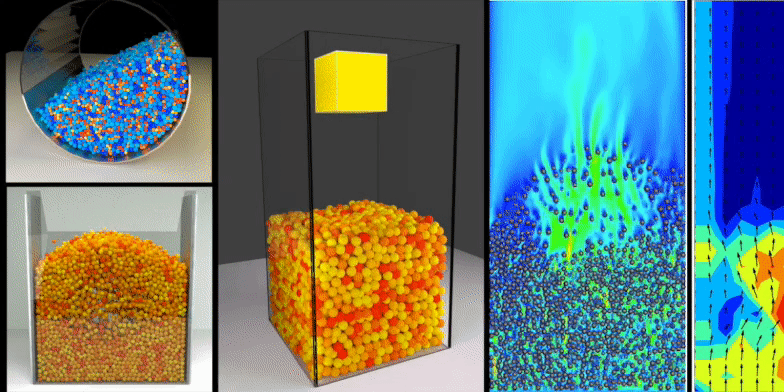Numerical modelling of single- and two-phase particle flows

Our research group is very active in the multi-scale modelling of single- and two-phase granular systems. Our modelling approaches range from DNS-Lagrangian over Eulerian-Lagrangian to Eulerian-Eulerian models. In our Eulerian-Lagrangian model a discrete element method (DEM) model description of the particles is coupled to a volume-averaged description of the fluid phase. Both the particles and the fluid-phase are described in full 3D and a soft-sphere approach is used to model collisions between contacting particles. This modelling has been gradually extended to now allow also the modelling of non-spherical particles, e.g. cubes or cylinders (e.g. Lu et al., 2014; 2012).
Different approaches to model non-spherical particles have been developed including multi-sphere approximations or super-quadrics. However, a key issue in accurate modelling of non-spherical gas-solid systems is the lack of a suitable drag force formulation. Thus, we currently develop and apply Langrangian-DNS models to derive drag-force relationships that can be used for both Eulerian-Langragian and Eulerian-Eulerian modelling approaches (e.g. Chen et al., 2015).
In our DNS-Lagrangian model a DEM description of the (non-spherical) particles is coupled to lattice-Boltzmann formulation of the fluid phase. In recent years our modelling activities have focused on the following systems: (i) fluidized beds, (ii) rotating cylinders or kilns, (iii) vibrated beds and (iv) impact of intruders (e.g. Third et al., 2011; 2012).
